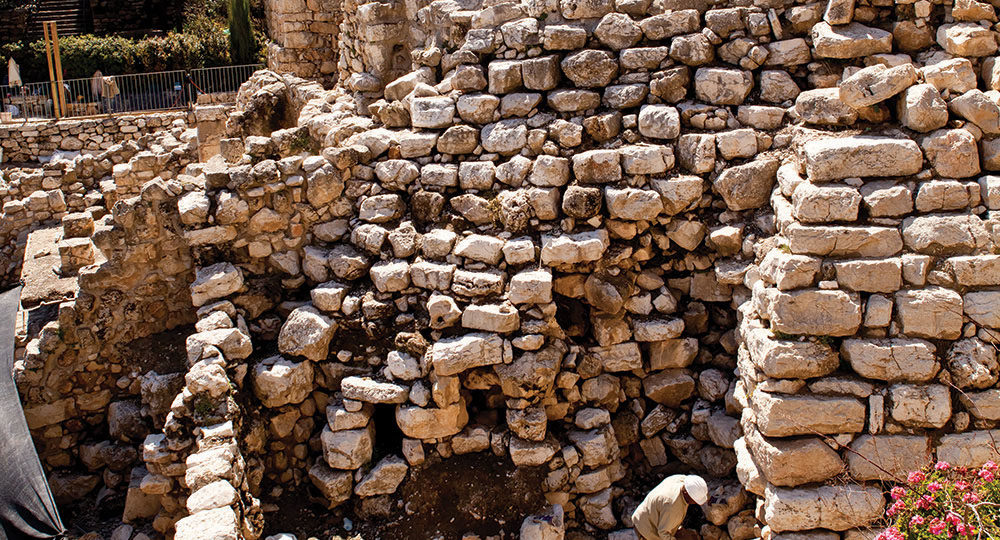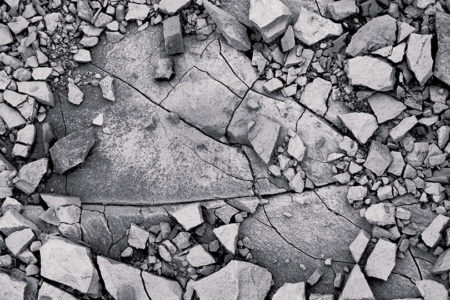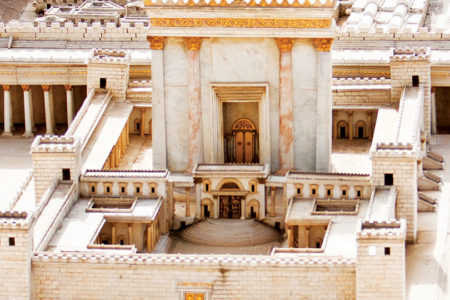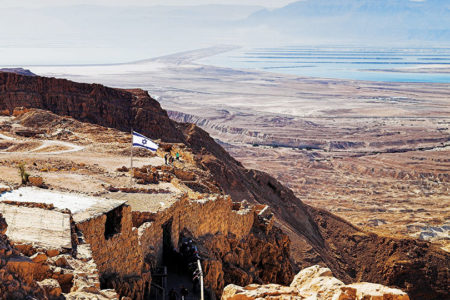The Underlying Proof
Much of Israel’s history lies underground. And sometimes, even skeptics can’t deny the evidence
Khirbet Qeiyafa is a provincial town located about 19 miles from Jerusalem in the Elah Valley, where a young David slayed the Philistine giant Goliath. Today, 30 centuries later, it is contributing the most to the archaeological proof of a Judean kingdom.
Identified with the biblical city of Shaaraim (1 Sam. 17:52) because two gates (Hebrew, shaaraim) from the 10th century BC were found there, Khirbet Qeiyafa is helping to silence critics who discount the Israelite kingdoms of David and Solomon as historical fiction.
Archaeologists Yosef Garfinkel and Saar Ganor uncovered impressive fortifications, parts of the city wall, an administrative center, a palace, a royal storeroom, a pillared building, and 10 houses that date from the late 11th to the early 10th centuries BC (the days of Kings Saul through Solomon).1 Here, too, were found inscriptions in either Canaanite or early Hebrew, possibly indicating an archive. The presence of such written documents supports the literary activities ascribed to David and Solomon. Archaeologists claim the palace and storeroom were under David’s administrative control and therefore were linked to his rule in the capital city.
Even more startling was the discovery of cultic shrines and objects, such as clay model temples that had features similar to those that would one day adorn the first (Solomonic) Temple in Jerusalem. These were probably votive objects used during local worship since the Tabernacle and tent of meeting were pitched at a distance.
These objects reveal active religious practice; and with the size and scope of the administrative, social, and literary activities in the town, they argue for a well-developed state. If such a small outlying site was this developed in the 10th century BC, there can be no doubt the larger city of Jerusalem was a Judean kingdom.
More than a decade ago, Tel Aviv University archaeologist Israel Finkelstein and coauthor Neil Silberman declared in their popular book, The Bible Unearthed: Archaeology’s New Vision of Ancient Israel and the Origin of Its Sacred Texts, “Not a single trace of tenth-century Judahite literary activity has been found….In light of these findings, it is now clear that Iron Age Judah enjoyed no precocious golden age.”2 In other words, there was no capital city of Jerusalem as described in the Bible.
Archaeology, however, is ever-changing our view of history and proving the Bible’s accuracy.
Israeli archaeologists Ronny Reich and Eli Shukron uncovered walls and fortifications associated with the ancient City of David that were built on the remains of earlier Canaanite and Jebusite fortifications and water systems. Previous excavations under Yigal Shiloh revealed a massive, 12-story-high, stepped-stone structure from the 13th century BC upon which David began to build his city (2 Sam. 5:9). This foundational structure may have served as a retaining wall, buttressing the “stronghold of Zion” (v. 7).
ZONDERVAN HANDBOOK OF BIBLICAL ARCHAEOLOGY
Examine a wealth of archaeological discoveries that have unlocked the world of the Bible in the Zondervan Handbook of Biblical Archaeology by Randall Price.
Just above, monumental buildings probably associated with that structure were uncovered by Hebrew University archaeologist Eilat Mazar. She also found the broken rim of a large ceramic jar with a 10th-century inscription in an early Canaanite dialect. Since the jar predates Israelite rule, it is likely the Jebusites wrote the inscription. They constituted part of the city’s population in the time of Kings David and Solomon.
At Tel Zayit, a large limestone boulder with a bowl-shaped hollow ground into one side contained two lines of alphabetic writing, known as an abecedary. Found in a clearly stratified 10th-century context, it contained all of the letters of the Canaanite alphabet, revealing that a literate culture already existed when David conquered Jerusalem. It reveals the existence of Judean-Israelite scribes, indirectly supporting a Davidic-Solomonic kingdom (where court documents would be archived).
Based on this find, David Carr, a professor at Union Theological Seminary, confessed, “The discovery of the Tel Zayit Inscription proves just how dangerous it can be to base arguments about early history on gaps in the historical record. Therefore, I believe that other scholars and I were ill advised in reading too much into the relative absence of data for writing in the 10th century B.C.E.”3
Archaeological evidence demonstrates the Bible’s description of the early history of Israel is accurate and argues for accepting the maxim, “Absence of evidence is not evidence of absence.” Simply because we do not yet have evidences from archaeology to support certain statements in the Bible does not mean the Bible is wrong. Archaeological discoveries show that the biblical details of political and religious life, as well as Temple construction, could only have been provided by someone who lived during that time, rather than by a later storyteller.
Even though we may never find archaeological support for everything in Scripture, the evidence we have discovered is sufficient to show God’s Word can be trusted and should be our priority in any study of its historical context.
ENDNOTES
- Hershel Shanks, “Newly Discovered: A Fortified City from King David’s Time,” Biblical Archaeologist 35:1 (2009), 38-43.
- Israel Finkelstein and Neil Asher Silberman, The Bible Unearthed: Archaeology’s New Vision of Ancient Israel and the Origin of Its Sacred Texts (New York, NY: Free Press, 2001), 235, 238.
- David M. Carr, “The Tel Zayit Abecedary in (Social) Context” in Literate Culture and Tenth-Century Canaan: The Tel Zayit Abecedary in Context (Winona Lake, IN, 2008), 125.








